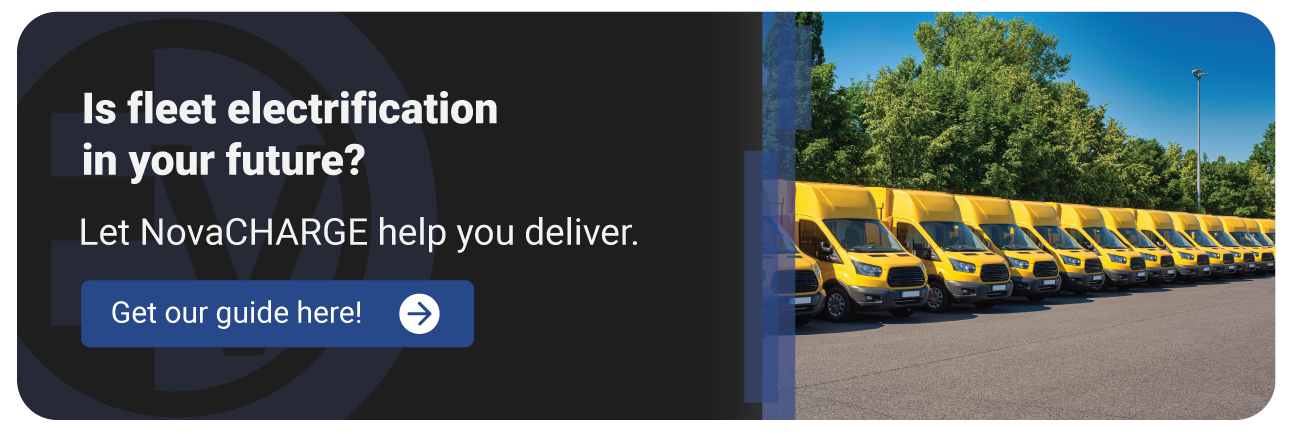The Future of Commercial Fleet Electrification
Sep 18, 2023 | 7 MIN READ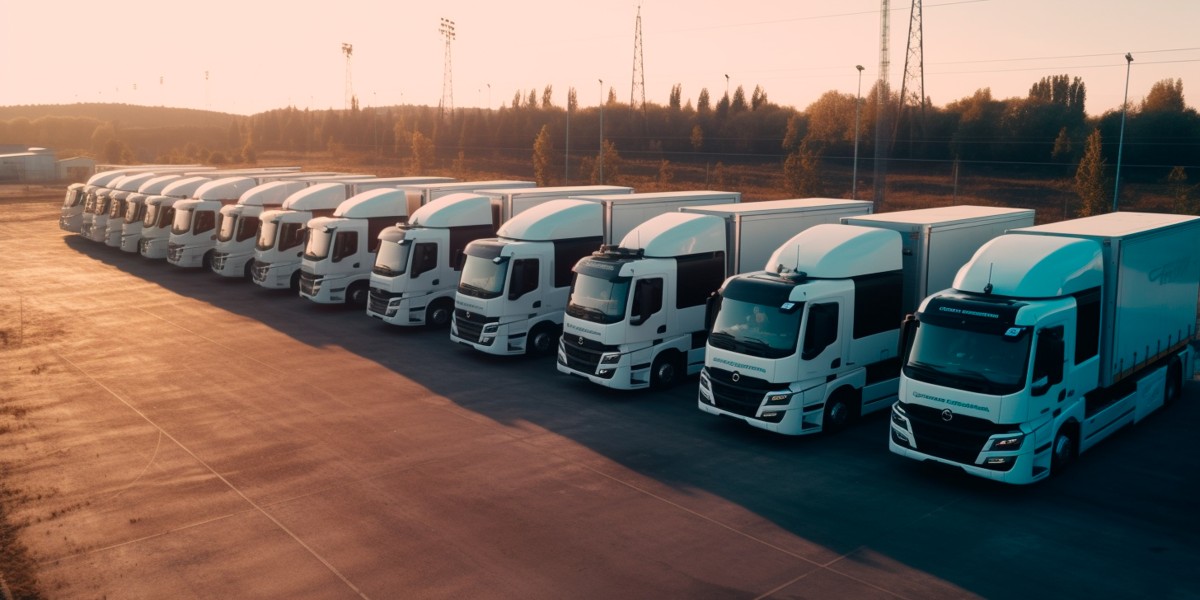
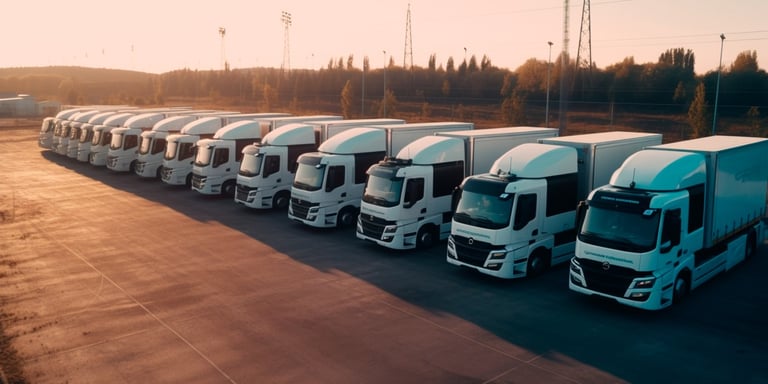 For the last decade or so, most discussions about electric vehicles and their future have focused on challenges and obstacles, but we’ve reached a tipping point. More recent discussions are focused on infrastructure, technology, and the initiatives we’ll need to implement in order to improve electric vehicles, their range, charging, and their capabilities.
For the last decade or so, most discussions about electric vehicles and their future have focused on challenges and obstacles, but we’ve reached a tipping point. More recent discussions are focused on infrastructure, technology, and the initiatives we’ll need to implement in order to improve electric vehicles, their range, charging, and their capabilities.
One of the places we’re currently seeing significant investment from stakeholders in the EV space is fleet electrification. More specifically, the shift is now focusing on how to improve EV technology to heavy duty and long haul trucks to advance fleet electrification goals. Those advancements, especially to range capabilities, have the potential to change commercial fleets in major ways.
Quick Links
- The Current State of Electric Fleets
- Advancements in Heavy Duty Fleet Electrification
- What Fleet Managers Can Do to Start Fleet Electrification Now
The Current State of Electric Fleets
While electric vehicle sales for passenger vehicles are rising, commercial fleet adoption of EVs is growing at a much slower rate. However, many fleet managers are learning that, especially when it comes to light duty vehicles, there are significant benefits to fleet electrification.
While we’ve seen major retailers and shipping/freight companies like Amazon and FedEx go electric, research suggests that only 5% of fleet managers have made a shift to fleet electrification, despite the benefits. The remaining 95%? They’re in various stages of fleet electrification with 30% making some headway and 65% having yet to take any steps forward.
One of the primary obstacles for fleet managers is the cost, but thanks to infrastructure investments and sustainability goals, many are looking for ways to mitigate the “upfront” costs of infrastructure, vehicle purchases, and more. However, there are fleet electrification strategies that can help, including viewing it as a process rather than a full replacement of an existing fleet.
While other challenges in the industry exist, such as driver shortages, changes to technology, government incentives, increases in EV production, and a greater understanding of the impact of an electric fleet on both the environment and revenue, suggests, though slow, there’s still EV fleet growth ahead.
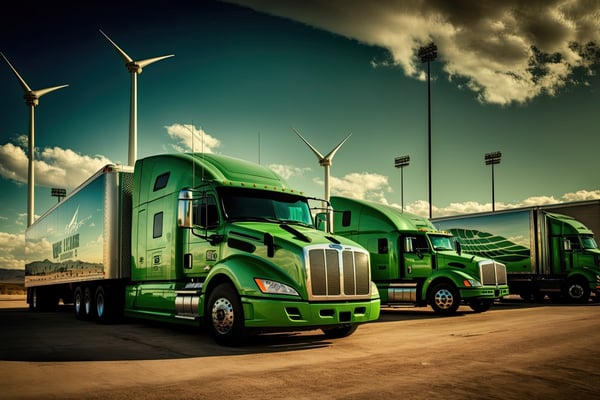 Advancements in Heavy Duty Fleet Electrification
Advancements in Heavy Duty Fleet Electrification
One of the biggest challenges with commercial fleets is vehicle range and vehicle power management. While EV batteries, with no idle and regenerative braking, are ideal for stop and go routes, when it comes to long haul or heavy duty vehicles, electric vehicles have had some catching up to do.
When we consider what heavy duty vehicles need to do, from refrigeration to hauling heavy loads and requiring additional power for additional equipment features such as hydraulics etc., it’s no surprise they’ve been lagging when it comes to EV development and adoption.
Heavy duty vehicles will need more powerful batteries, capable of delivering more power and increasing vehicle range and, while batteries are improving, we’re just starting to see them develop the power that can “fuel” heavy duty vehicles.
However, more powerful batteries also come with complications such as heat distribution and a need to improve connections to maximize power and improve efficiency. Original equipment manufacturers (OEMs) are working hard to develop and leverage thermally conductive materials in nearly every aspect of an EV’s electronic and heat conduction components.
Thankfully, those technologies are in the works and major manufacturers, including Volvo Trucks, are working with partners like the state of California to test and determine, on Class 8 trucks, what heavy duty vehicles will need to improve battery performance and efficiency. Their first heavy duty EV truck tests were conducted on “an electric adaptation of its conventional diesel-powered VNR tractor. It had a 264 kWh battery pack powering the tractor’s twin motors with more than 4,000 lb-ft of torque and a range estimated at up to 150 miles.”
These tests provided a considerable amount of information about what technology would need to provide to improve performance, but it also helped stakeholders and fleet managers learn what other strategies would need to be implemented to support the technology, especially as it improves. And, rest assured, it will.
Over the last nearly fifteen years, we’ve seen EV ranges increase substantially. In 2010, EV’s averaged around 80 miles per charge. Now? They average over 200 miles with a maximum range (dependent upon driving conditions) closer to 500 miles. There’s little reason to believe we won’t see the same kind of growth with commercial vehicles, especially as major truck manufacturers and the government invest in the research and development we’ll need to make those improvements.
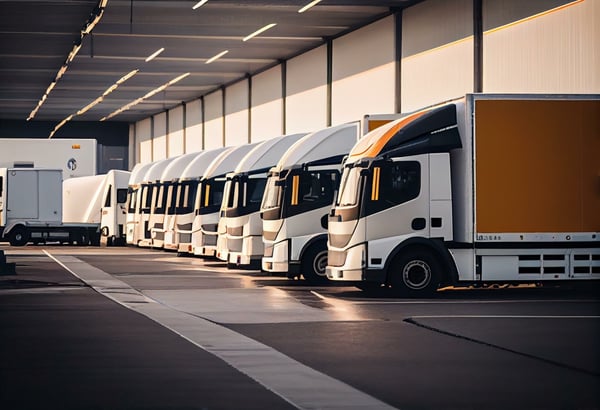 What Fleet Managers Can Do to Start Fleet Electrification Now
What Fleet Managers Can Do to Start Fleet Electrification Now
While those advancements are works in progress, electric fleet advancements are coming sooner rather than later. Because one of the primary obstacles for many organizations is cost, one of the best strategies fleet managers can use is to view fleet electrification as a process rather than a one time event and that means getting a jump on the future and starting now.
While the work of stakeholders in the heavy duty space focused largely on the technological demands of commercial truck fleets, other logistical needs were confirmed and mapping out those needs and concerns are among the preliminary work fleet managers can begin investigating now.
1. Start researching EV charging solution providers
Not all providers are the same. You’ll want to consider all aspects of the service they provide including, but not limited to:
- EV charging platform management system
- EV charging network
- EV charging hardware
- Networked vs non-networked charging stations
- Vendor company solvency and growth potential
- Warranty and support
- Level of service (do they outsource any part of the process?)
EV charging solution providers all have different offerings including hardware, software, and their networks and so it’s wise, prior to making any plan, to start doing your due diligence and looking for a provider who can meet your needs and assist you in the process.
2. Consider replacing light duty fleet vehicles first
As of January 1, 2023, there are incentives and tax credits for electric vehicles (below 14,000 pounds gross vehicle weight) and so now is the time to look into the investment. Additionally, with other support from the National Electric Vehicle Infrastructure (NEVI) Formula Program and state level programs, there’s more financial support than ever for businesses looking to make the switch. Additionally, your EV charging solution provider should be able to help connect you to local and state level resources to assist as well.
Starting small, literally and figuratively, can help you start figuring out the logistics and adjusting to the change as well as getting the infrastructure you’ll need up and running. Managing the logistics when fleet vehicles are nearby and negotiating shorter local routes can help with the other necessary adjustments.
One of the most challenging aspects of managing EV fleets, of managing fleets in general, is route logistics. This becomes even more important when it comes to EVs as topography, such as steep hills or sustained climbs, can impact performance. Maximizing EV batteries becomes as much reliance on technology as it does on route logistics and management.
4. Consider retraining programs or initiatives for drivers
When it comes to vehicle power management, one of the biggest advantages of electric vehicles is regenerative braking which can help recover up to 70% of the energy lost on braking. While larger vehicles and trucks may not recover nearly as much as passenger vehicles, it’s still a huge opportunity to conserve and restore energy for battery optimization. Still, for many drivers, slowing and braking strategies for combustion engines are different and you’ll need to work on helping drivers adjust.
5. Begin preliminary site analysis
As you make the shift to an EV fleet, one of the most important aspects will be managing charging at your depot. Space may constrain you as might what power is available from the grid. It’s vital that these concerns be addressed prior to making any larger investments. For example, if your site can only handle a certain number of EV charging stations, the logistics around ensuring your fleet can charge as needed may get complex, so going into fleet electrification with a complete understanding of what your capacity is is essential.
Perhaps the most important aspect of all of this is understanding that fleet electrification is a process. Even the big companies who made the shift didn’t replace entire fleets. They started with pilot programs. They started by analyzing which vehicles needed replacing and which routes were best suited for electric vehicles. Even though they started small, the most important part is that they started.
If you’re ready to get this process started, reach out to the team at NovaCHARGE. We’ll help you through the whole process from site analysis and installation to implementation and ongoing support. Your success is our success and we’re invested in helping you achieve your sustainability and cost saving goals.
